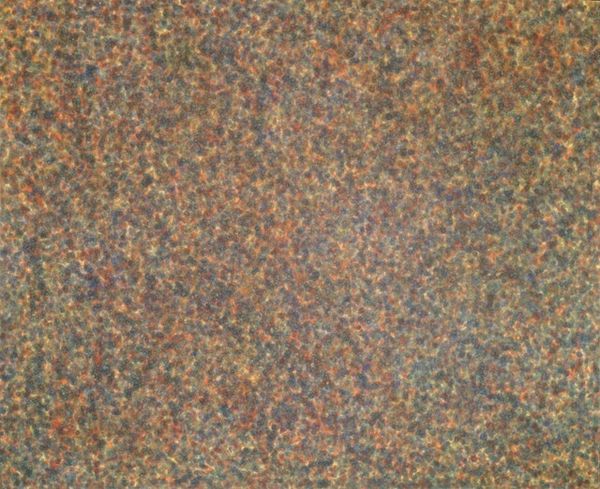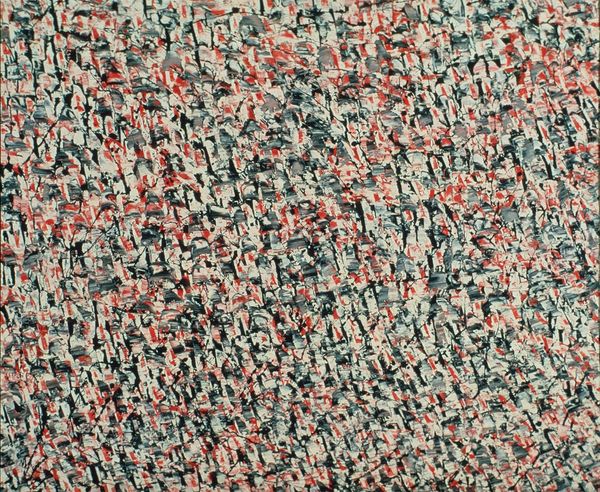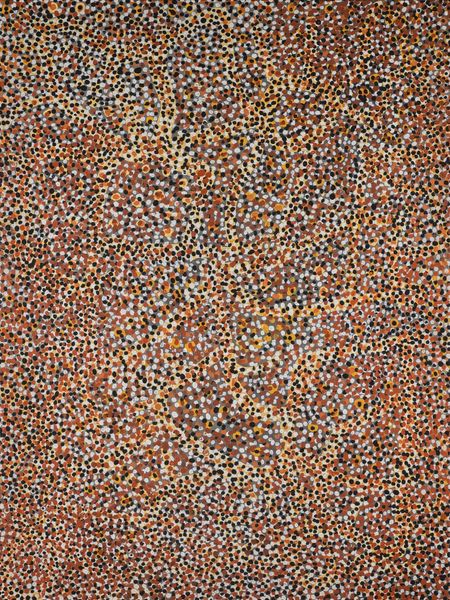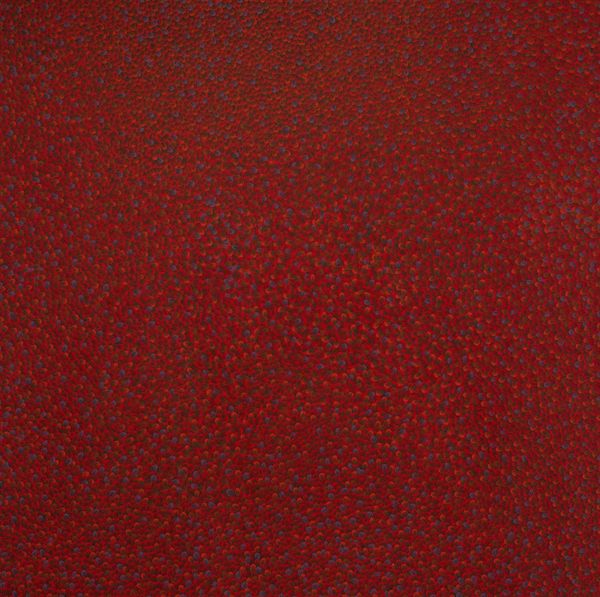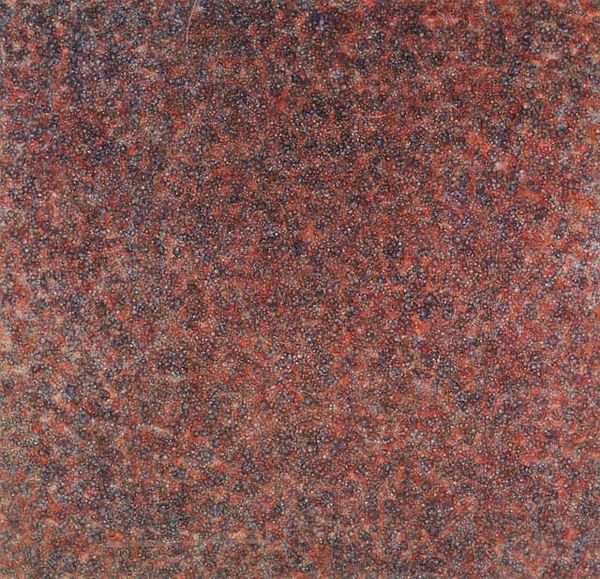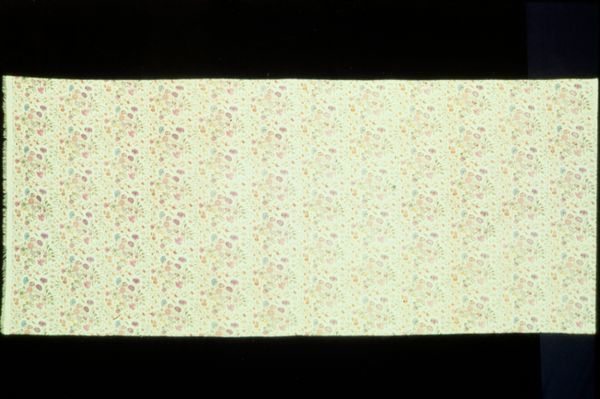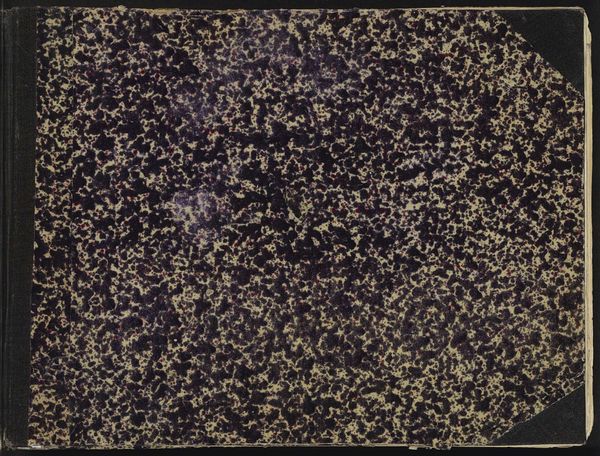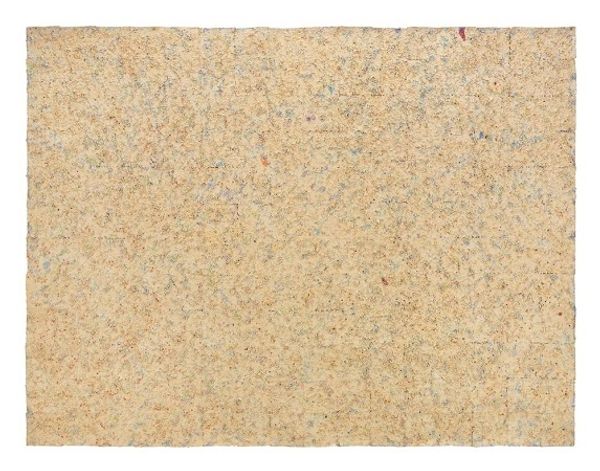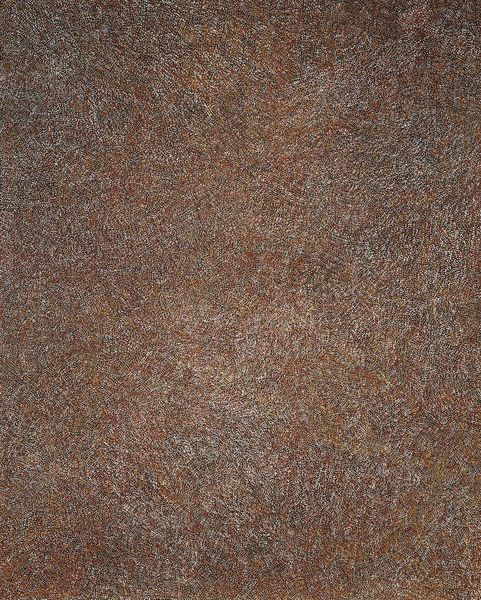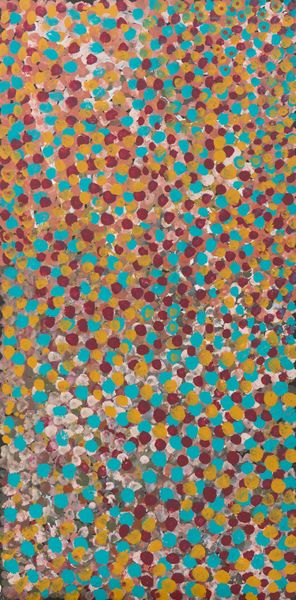
#
abstract-expressionism
#
abstract expressionism
#
organic
#
pattern
#
abstract pattern
#
organic pattern
#
matter-painting
#
abstraction
#
texture
#
organic texture
Copyright: Howard Mehring,Fair Use
Editor: This is an untitled piece by Howard Mehring from 1960. Looking at it, I’m immediately struck by its textured surface. It feels almost like a field seen from above, a pointillist landscape rendered with countless tiny dabs of color. What do you see in this piece? Curator: It does evoke that sense of vastness, doesn't it? Like looking at a detail so magnified it becomes its own universe. Mehring, part of the Washington Color School, really pushes the boundaries of color and surface here. Instead of focusing on gesture, like many Abstract Expressionists, he builds layer upon layer of these minuscule marks. Almost like the painting itself grew organically. It breathes. Do you get a sense of that almost tactile quality? Editor: I do, it's definitely calling me to reach out and feel the texture. Does this have anything to do with "matter-painting" or am I reaching too far? Curator: No, no, you’re spot on! The emphasis on materiality – the physical properties of the paint itself – certainly connects it to matter painting. He's not just depicting something, he's building a surface that invites exploration, inviting us to ask questions about perception. Is it flat, is it deep, is it near or far? It flirts with these boundaries. Editor: That's so interesting! I initially saw a simple texture, but now I see how Mehring's using these layers to create a conversation about space and depth. Curator: Exactly! And that's the joy of abstraction, isn't it? It constantly reframes the way we see. We bring ourselves and then the artwork gives us back new ways to perceive. Editor: I’ll definitely be looking at Abstract Expressionism with a fresh eye now. Curator: And perhaps feeling it with new hands, too? A worthy undertaking.
Comments
No comments
Be the first to comment and join the conversation on the ultimate creative platform.
